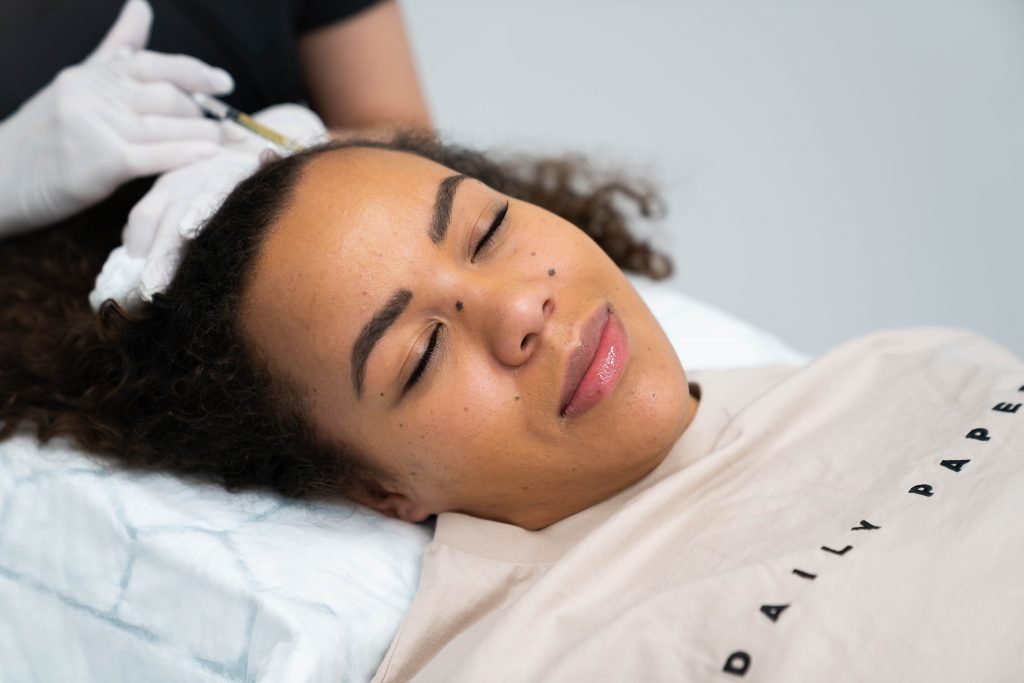Treatment
PRP against androgenic alopecia
As with general alopecia, we recommend PRPto restart hair growth. The treatment involves drawing blood from the fold of your arm and centrifuging it to extract the blood’s growth factors.
These growth factors are then injected into your scalp with a very thin needle. When the growth factors are injected into the hair follicles, a number of positive reactions are triggered in the skin.
First of all, the stem cells receive signals to produce more collagen, which contributes to more building blocks in the cells. The treatment also creates new small blood vessels in the area, which in turn provide additional nourishment to the hair.
In men, it may also be a good idea to combine PRP treatments with Finasterideor Minoxidilto more effectively counteract androgenic alopecia.




